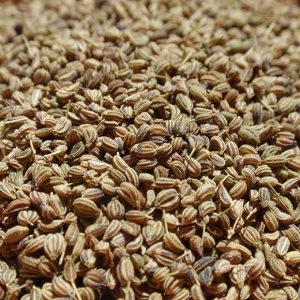- FREE SHIPPING IN CANADA ON ORDERS OF $100 OR MORE AT REGULAR PRICE. SOME EXCEPTIONS APPLY.
Shop
Essential oils
HYSSOP DECUMBENS, Hyssopus officinalis var. decumbens
Price range: $25.20 through $281.50
Latin name: Hyssopus officinalis var. decumbens
Distilled part: aerial parts
Origin: France
Properties: antibacterial, anticatarrhal, expectorant, remarkable anti-asthmatic, potent antiviral, tonic and stimulant, sympathicotonic (affects the sympathetic nervous system)
Indications: asthmatic, chronic and acute bronchitis, rhinopharyngitis, sinusitis, secretory and inflammatory asthma, bronchiolitis, catarrh, excluding pure allergic asthma, nervous depression and anxiety
Contraindications: None at physiological doses.
Our expert’s opinion: Read the description below.
HYSSOPUS OFFICINALIS VAR. DECUMBENS (HYSOPE RECUMBENT) – CURE ASTHMA WITHOUT DISASTER!
Author: Maurice Nicole, nes
This plant originates from the Mediterranean basin and South Asia. It has been used for a very long time as an seasoning in the kitchen. It’s very mellifer. It was used to purify the temples and the baths of lepers. Introduced into the gardens of the Benedictine monks, it becomes one of the most important among the 130 plants that perfume the famous Chartreuse liqueur, and is also part of the composition of the Benedict. Hysope essential oil is appearing as early as 1574.
But be careful, the Hyssope lying with the hysope “ordinary”, known as the officinalis, which is rich in neurotoxic and abortive pinocamphone, should not be confused to be used with great caution.
The essential oil of the lying hyssop (hysopus officinalis var. decumbens, also known as the simplified Hyssopus decumbens), on the contrary, is a complex devoid of toxicity. It contains mostly linalool (43%), a little 1.8 cineole (14%), with some traces of lactones. This unique composition confers major antiviral properties (thanks to the synergy linalool + cineole), expectorant and mucolytic. Linalol, with its anti-inflammatory and antispasmodic properties, temporizes the potentially drying effect of the cineole at the bronchi level, making it a major essential oil for respiratory ailments, including asthma, for which it constitutes a treatment of choice.
At the psycho-olfactory level, it is neurotonic and elevates the spirit. Its aroma is remarkable, without asperity, soft and airy. Its lightness, evocative of recklessness, allows to reduce excessive emotion to more measure.
Examples of indications
ASTHMA
- 40% hyssopus decumbens/hyssop reclining
- 10% Ammi visnaga/khella
- 10% Inula graveolens/Elecampane
- 20% Pimpinella anisum/green Anis
- 20% Mentha spicy/green Mint
Rectal route: suppositories containing 250 mg of the essential oil formula; 1 suppository in the evening at bedtime.
Oral: in case of crisis, 1 drop under the tongue at 5 minutes.
DEPRESSION
- 10 ml hyssopus decumbens/hyssop recumbent
- 10 ml boswellia carterii/incense
- 10 ml Citrus reticulata (Fe)/Mandarin leaf
- 10 ml Coriandrum sativum (SEM)/coriander seed
- 10 ml thymus satureioides/thyme with Borneol
Oral: 5 drops in 1/2 teaspoon of olive oil 3 X/day.
HERPES I
- 5 ml hyssopus decumbens/hyssop recumbent
- 5 ml Cymbopogon citratus/Citronella from India
- 5 ml Mentha x piperita/Peppermint
Dermal: apply to the affected area, 4-6 x/day.
Dosage *: suggested for an adult (+ 12 years old) .
It is only part of the information to be considered in a therapeutic situation and should not in any case be substituted for an informed therapeutic opinion. Hunzaroma Inc. is not liable to the user for any decision, action or omission it takes in connection with the information contained in this bulletin.




